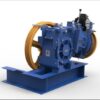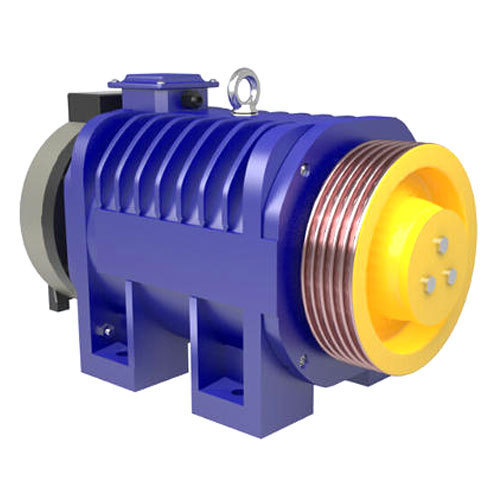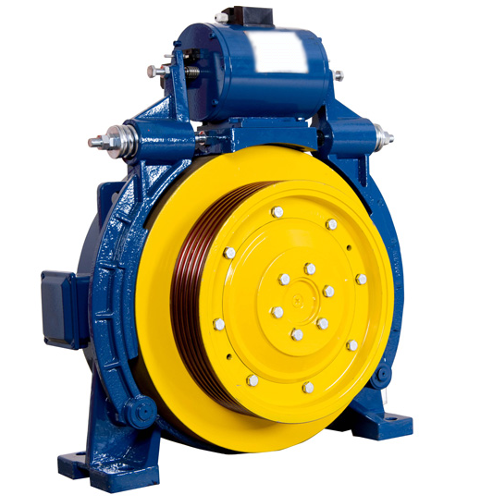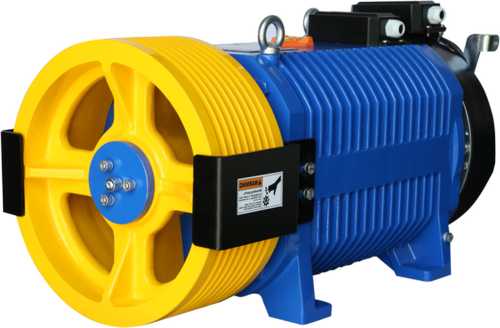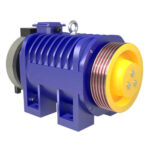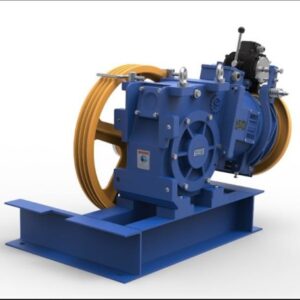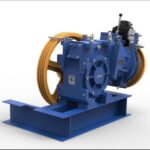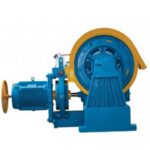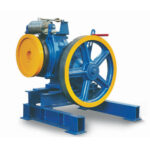Gearless Machine
Gear Less Machine
Description
Gearless traction elevators
Gearless traction electric elevator first invented by OTIS in 1913, first installed in Woolworth Building in New York City. This type of drive system could be employed in buildings of any height and operated at much higher speeds than steam-powered elevators. This design has proven so durable that even now, when a building is modernized—while the elevator control system is replaced with the most up-to-date electronics—it is rarely necessary to replace a well-maintained gearless machine. These elevators typically operate at speeds greater than 500 feet per minute (or 2.5m/s).
In a gearless traction machine, five to eight lengths of wire cable, known as hoisting ropes (or wire ropes), are attached to the top of the elevator and wrapped around the drive sheave in special grooves. The other ends of the cables are attached to a counterweight that moves up and down in the hoistway on its own guiderails. The combined weight of the elevator car and the counterweight presses the cables into the grooves on the drive sheave, providing the necessary traction as the sheave turns.
To reduce the load on the motor, the counterweight is calculated to match the weight of the car and a half-load of passengers. As the car rises, the counterweight descends, balancing the load. This reduces energy consumption because the motor is required to lift no more than the weight of half a car load at any time. The grooved sheave in this traditional gearless system is quite large, from 0.6 to 1.2 meters (2–4 ft) in diameter. The electric motor that runs it must be powerful enough to turn this large drive sheave at 50–200 revolutions per minute in order to move the elevator at the proper rate.
Safety is provided by a OSG that engages the car’s brakes, should the elevator begin to fall. A powerful clamp clutches the steel governor cable, which activates two safety clamps located beneath the car. Moveable steel jaws wedge themselves against the guiderails until sufficient force is exerted to bring the car to a smooth stop.
Elevators with more than 100 ft (30 m) or the speed is 2.5m/s or above of travel have a system called compensation. This is a separate set of cables or a chain attached to the bottom of the counterweight and the bottom of the elevator cab. This makes it easier to control the elevator, as it compensates for the differing weight of cable between the hoist and the cab. If the elevator cab is at the top of the hoist-way, there is a short length of hoist cable above the car and a long length of compensating cable below the car and vice versa for the counterweight. If the compensation system uses cables, there will be an additional sheave in the pit below the elevator, to guide the cables. If the compensation system uses chains, the chain is guided by a bar mounted between the counterweight railway lines.


